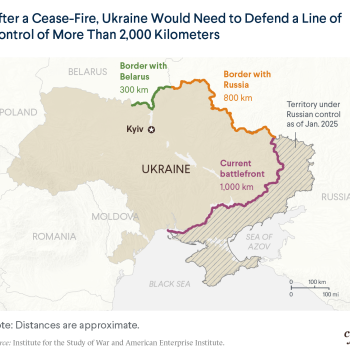This flowering of variation and manifold numbers of approaches, however, does have its drawbacks. Any centralizing attempts in practice, theology, nomenclature and definitions, or political stances by various groups are going to be less likely to be embraced or to be effective and thoroughgoing among any group of people that becomes larger than about a few dozen individuals. This isn't always a problem, and doesn't have to be; but it can be in certain circumstances, including the recent example of Wiccan chaplain Patrick McCollum's legal battles with the California Corrections administration in terms of allowing Wiccan (and presumably other Pagan) chaplains to work in and get compensated for their services to Pagan prisoners in the prison system.
There are certainly many causes -- legal, social, and political -- that modern Pagans can and should band together over, since they are truly "common causes." But what about everything else? Perhaps a new model of what is useful should be promulgated, because not only would such a model be more likely to be sustainable for the future in the modern Pagan movement, but it is far closer to the reality, and a much more desirable one for most participants. That model would be the model of "niche religions," as mentioned in the title of this piece.
Too often, models from the dominant world religions have infiltrated our understandings of what religion is and what religion does or should be -- the idea, for example, that "belief" is in any way important to questions of religion at all, which comes from the fact that the two largest religions in the world at present (Christianity and Islam) are creedal monotheisms that require orthodoxy among their practitioners. Likewise, we've too often thought that a religion must be all-encompassing and self-contained (i.e., that one need not look outside it to have other spiritual needs met), and to have a widespread and even global reach in order to be useful or significant. This simply isn't the reality, nor is it necessarily viable and desirable.
Localization, small-scale community work (whether in-person or online), shared individual traditions meeting the needs of self-selected groups of people, seems to be a possibility in which the fragmentation of modern Paganism can be both confronted and taken as a valid reality in itself, rather than attempting to squeeze it onto the Procrustean bed of what is "proper" or "appropriate" or "normative" in terms of larger religious movements outside of Paganism. Filling individual local niches in religious sensibility, rather than attempting to have an overarching and often not locally relevant practice or theology, is something that can be done now -- and is being done now in many places -- rather than any attempt to unite or create uniformity in practices.
Just as in biological and ecological niches, it is possible to have comparable religious practices outside of these individualized and localized niches. Any species may have other species that are connected to it by common evolutionary ancestors across a wide geographic area, and yet the characteristics of the local species will fit its local ecological niche much more "naturally" than dropping in a related species from elsewhere. Where such activities do occur in the ecological sphere, the resulting effect often favors that new species, which can lead to an imbalance in the overall ecology of a bioregion, and that new invasive species can decimate the indigenous species in often catastrophic ways. While this may seem to be a "success" from the viewpoint of the invasive species, what about the indigenous species that have been damaged or often utterly destroyed as a result?
By introducing some of these biological terms, I am not seeking to enter into the debate in terms of Paganism being, or being connected to, various indigenous religions. That is a debate (though around for a long time, but particularly noteworthy in the aftermath of the 2009 World Parliament of Religions in Australia) which is fraught and problematic on many levels, and deserves a treatment (preferably a large community conversation!) of its own. However, the model might still be useful in terms of looking at how future forms of Paganism and its practice might best exist in their individual communities.
Many modern Pagans, following Heinlein, often think that "specialization is for insects." Another way to put this is what Sannion said in an essay in From the Satyr's Mouth, which is that the only "specialists" in the ancient world were slaves, whereas people of higher classes might be more wide-ranging in their interests and abilities. Instead, humans in these views should be as adaptable and generalist in their skills and outlooks as possible. While I think this is a generally good model for a variety of endeavors, having this model as a template for one's religious community and context is not quite as useful, in my opinion. If we think of our religious communities -- the groups with which we share common (though not always universal) practices and theological approaches -- as environments rather than as some sort of corporate entity comparable to a human (whether we take that in the legal "corporate personhood" or in the magical egregore sense!), we will come even closer to understanding what the implications of this "niche religions" model happen to be.




